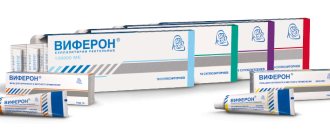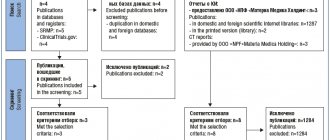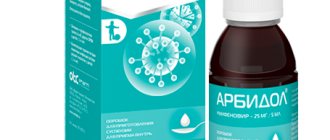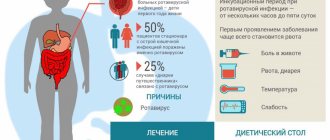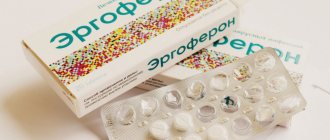Prevention of influenza, ARVI and coronavirus is a single set of measures aimed at preventing morbidity. The words of Hippocrates are relevant today: “It is easier to prevent a disease than to treat it.” Compliance with preventive measures helps protect against infection, reduce the risk of large-scale spread of infection, and save people’s lives.
With the advent of the pandemic, the whole world has felt the importance of preventing respiratory infections. COVID-19 has forced humanity to take a fresh look at ways to stay healthy. On a par with coronavirus infection are influenza and ARVI, which people encounter in the fall and spring. As practice shows, seasonal diseases sometimes cause complications no less severe than Covid. Prevention of influenza and ARVI, developed by epidemiologists, helps protect against infection and its consequences. Read about the characteristics of respiratory viruses, means and methods of protection against infection in our article.
Ways to get a respiratory infection
Respiratory viruses are a large family of ultramicroscopic intracellular parasites. Some of them become noticeably more active during the demi-season, causing epidemics of ARVI (acute respiratory viral infection). These are paramyxoviruses, picornaviruses, adenoviruses, coronaviruses, parainfluenza viruses, influenza A, B, C.
Pathogens of infectious respiratory diseases are highly contagious (infectious), but they can only enter the body through the mucous membranes of the respiratory tract. The main method of infection is aerogenic or airborne droplets. Viral particles fly through the air with droplets of liquid that escape from the mouth of a sick person when sneezing or coughing. The second method of infection is through household contact. The direct route is through a handshake with a carrier of the infection, the indirect route is through contaminated (infected) surfaces. Having picked up the virus in your hands, it is easy to carry it into your nose, your mouth is the “entrance gate” of ARVI.
How it spreads
The flu is highly contagious, especially when children are in enclosed spaces, such as school classrooms or daycare centers. It spreads when they inhale droplets of mucus containing live viruses that an infected person releases when they sneeze, scream, cry or cough, or when they come into direct contact with mucus or saliva from someone who has the flu (shared toys, dishes, dirty fingers). Children are contagious for about a day before symptoms appear, and then for about a week while they have symptoms.
There are ways in which the virus spreads in children: It can easily pass from child to child as they share things such as pencils, toys, computers, remote controls, spoons and forks. Another main method is after touching infected surfaces, and then children rub their eyes, nose or mouth with their fingers. Source: Clinical and laboratory characteristics of influenza in children at the present stage. Chudakova T.K., Mikhailova E.V., Zryachkin N.I. Bulletin of Volgograd State Medical University, 2013. p. 67-69.
Means for the prevention of acute respiratory viral infections and influenza
Preventive measures against acute respiratory infections are divided into specific and nonspecific. Specific prevention is vaccination. The Russian Federation is immunizing the population against influenza and coronavirus. There is no vaccine for other viruses, of which medical virology numbers more than two hundred. Non-specific methods include drug protection of the body, home remedies to strengthen the immune system, rules for the prevention of influenza and ARVI, recommended by WHO.
Nonspecific prevention
To prevent influenza and ARVI, two types of pharmacological drugs have been developed:
• Direct acting drugs. They block enzymes on the surface of the virus. Because of this, the infectious agent loses the ability to reproduce its RNA and proteins. • Agents that stimulate the production of protective interferons to increase the body's resistance to infections.
Antiviral medications are available in the form of tablets, capsules, and powders. For children, there are syrups, suspensions, and drops that are convenient to take.
The TOP 5 drugs include:
• Arbidol. Active against most pathogens of acute respiratory viral infections, including influenza viruses. For prevention, take twice a week, for treatment - 4 times a day. In powder form it is allowed for children from 2 years old, in tablet form - from 6 years old. • Ergoferon. A fast-acting immunomodulator with proven effectiveness against respiratory viruses. Tablets for sublingual administration are prescribed: 5 pcs per day. within 2 hours, on subsequent days - 1 pc. three times. • Ingavirin. An innovative antiviral agent with high anti-inflammatory activity. Used for all types of acute respiratory viral infections, including coronavirus infection. In pediatrics it is used from 7 years of age. To achieve results, 1 capsule per day is enough. • Kagocel. A powerful immunostimulant, it causes the synthesis of interferons by all cells of the body that participate in the antiviral response. Allowed for children from 3 years old. Prevention is carried out in cycles: 2 days, 2 tablets - 5 days break - 2 days, 2 tablets. • Anaferon. Increases the production of interferon, prescribed for the prevention and treatment of acute respiratory viral infections. In pediatrics, a specially developed children's version of the drug is used.
Unlike antibiotics, antivirals are sold without a doctor's prescription.
Organization of home prevention of ARVI and influenza includes:
• Nutrition correction. Foods high in ascorbic acid—vegetables, wild berries, fruits, herbs—help stimulate the formation of interferon. Protein is the building material for immune cells, so the diet should contain a sufficient amount of meat, fish, dairy products, and cereals (millet, oats, buckwheat). The main helper of immunity is vitamin D. It is found in egg yolk, seaweed, and cod liver. • Hardening, physical activity. It is recommended to start hardening procedures in the summer - before the start of seasonal epidemics. Sports activities saturate the blood with oxygen, accelerate hemodynamics, and increase blood supply to organs. This allows you to maintain the functionality of immune system cells to produce interferons.
• Use of folk remedies. Products with antimicrobial effects (garlic, ginger, onions), as well as plants with immunostimulating properties (ginseng root, rose hips, echinacea, sage, lemon balm) help protect against seasonal diseases.
To prevent illness, it is important to adhere to a rational work and rest regime. Doctors recommend getting enough sleep, walking daily, avoiding conflict situations that lead to stress, and taking vitamin and mineral supplements.
Symptomatic treatment of ARVI
The leading role in the treatment of respiratory infections belongs to symptomatic therapy.
Adequate hydration helps to liquefy the secretions and facilitate their passage.
Elimination therapy is recommended because it is effective and safe. Injecting saline into the nose 2–3 times a day removes mucus and restores the functioning of the ciliated epithelium [2, 6]. It is recommended to prescribe vasoconstrictor nasal drops (decongestants) in a short course - no more than 5 days. These drugs do not shorten the duration of a runny nose, but can relieve symptoms of nasal congestion and also restore the function of the auditory tube.
In order to reduce body temperature in children, it is recommended to use paracetamol up to 60 mg/kg/day or ibuprofen up to 30 mg/kg/day [4, 7, 14]. In adults, acetylsalicylic acid and nimesulide can also be used.
Antitussives, expectorants, mucolytics, including numerous patented drugs with various herbal remedies, are not recommended for use in ARVI due to ineffectiveness [7, 8].
Steam and aerosol inhalations are not recommended for use, since they did not show any effect in randomized studies, and are also not recommended by the World Health Organization (WHO) for the treatment of ARVI [9, 10].
Antihistamines have not shown effectiveness in reducing the symptoms of rhinitis and ARVI [11].
Vitamin C does not have a significant preventive effect on the average population, but this effect is observed in people under stress, such as athletes [12].
Recently, systemic decongestants (phenylephrine, pseudoephedrine) and complex preparations containing decongestants (sympathomimetics), antipyretic, analgesic, antihistamine, antiseptic components and ascorbic acid in various combinations have become widespread. These drugs are easy to use and show comparable effectiveness to other drugs in their groups.
, however, their use is possible only from the age of 12 years (Table 2).
To eliminate dryness, rawness and soreness in the throat, treatment is mainly local and consists of eliminating irritating foods, prescribing rinses with warm alkaline and antibacterial solutions, and using other local symptomatic remedies. Of particular interest are combination drugs, for example 2,4-dichlorobenzyl alcohol and amylmetacresol in combination with various dietary supplements, to eliminate the clinical manifestations of the disease, capable of relieving discomfort in the throat, and having a pronounced antibacterial effect. With severe pain in the pharynx, systemic analgesics are often ineffective and are used only as antipyretics. In these cases, combination drugs containing local anesthetics are also used. They are mainly presented in the form of aerosols and lozenges.
The composition of aerosols usually includes antibacterial (chlorobutanol hydrate, furacillin, sulfanilamide, sulfathiazole, chlorhexidine) components, menthol, camphor, eucalyptus, vaseline, camphor, castor, olive, peppermint, and anise oils. They have local anesthetic, antiseptic, and anti-inflammatory effects. Lollipops have a similar composition (antibacterial component, menthol, oils), reduce pain in the throat and have a deodorizing effect.
Prevention of bacterial complications
Drugs for the prevention of bacterial inflammation in acute respiratory viral infections are prescribed mainly locally; it is advisable to start using them at the final stage (5–7th day) of the disease. For these purposes, rinsing with antiseptic solutions is used (Table 3).
To prevent bacterial inflammation in the nasal cavity, it is advisable to use local antibacterial agents, such as antibacterial ointments containing mupirocin; it is possible to use drops and sprays with antibiotics.
Standing apart among drugs for the prevention of bacterial inflammation in the nasal cavity and pharynx is a drug containing colloidal silver - silver proteinate (Sialor®). This drug has an astringent, antiseptic and anti-inflammatory effect. In Russia, a 1–2% solution of silver proteinate has traditionally been used for local treatment of bacterial infections of the upper respiratory tract, eyes, and genitourinary system; in the Soviet Union, silver proteinate has been produced since 1964 in the form of a 2% solution.
Silver proteinate dissociates to form silver ions, which prevent the proliferation of bacteria by binding to their DNA, thus, Sialor® has a bactericidal and bacteriostatic effect on most gram-positive and gram-negative bacteria, such as Streptococcus pneumoniae, Staphylococcus aureus, Moraxella catarrhalis
, fungal flora, etc.
The anti-inflammatory mechanism of action of a colloidal silver solution on a damaged mucous membrane is based on the ability to form a protective albuminate film, which occurs due to the deposition of proteins. This film reduces the permeability of the mucous membrane to bacteria and ensures the normal functional state of cells, promoting the rapid restoration of the mucous membrane. All this is especially important for the prevention of secondary bacterial infection during ARVI.
Due to its wide antibacterial spectrum of action and the unique ability to form a protective film on the surface of the mucous membrane, Sialor® has an extremely wide range of indications for use. This drug is actively used in everyday practice not only for treatment, but also for the prevention of infections of the nasal cavity and nasopharynx in the autumn-winter period. Therapy with the drug also gives good results for non-infectious inflammatory diseases such as allergic and vasomotor rhinitis.
The solution is prepared immediately before use (200 mg of the drug is dissolved in 10 ml of water for injection), stored at room temperature, and can be used within 30 days after preparation. Inject 1-2 drops 3 times a day into the cleaned nasal passages for children 3-6 years old, 2-3 drops (1-2 irrigations for release forms with a spray nozzle) 3 times a day for children over 6 years old and adults each nasal passage. The duration of treatment is 5–7 days [15].
Flu and its dangers
Besides coronavirus, the most dangerous causative agent of acute infections is the influenza virus. It differs from its respiratory “relatives” in its high virulence - its ability to quickly spread throughout the body, causing severe complications - even lethality. The risk group includes people of advanced age, young children, patients with chronic cardiac and pulmonary pathologies.
The influenza virus provokes infectious and inflammatory diseases of the heart, nervous system, and brain. With a heavy viral load, intoxication quickly develops, the permeability of the vascular walls increases, hemodynamics are disrupted, the lungs lose their ability to absorb oxygen, and respiratory failure occurs, which can be fatal. The most effective prevention of influenza is the introduction of an influenza vaccine before the start of the epidemic season. Children are vaccinated from 6 months of age.
Symptoms of ARVI in adults
It is not worth describing specific symptoms for each type of virus. Yes, they differ, but only slightly. The general symptoms are almost the same and it is quite logical that with severe flu the signs of ARVI will be more pronounced than with a mild cold. But in any case, only a doctor will be able to say for sure what specific virus an adult has become infected with; self-diagnosis will not help in this case.
ARVI should be suspected if the following symptoms and their combinations are present2:
- Runny nose.
With heavy discharge, the cause most likely lies in a rhinovirus infection. - Cough.
A severe cough accompanied by vomiting may mean that the body has been attacked by a reovirus infection. - Temperature increase.
A high increase is characteristic of influenza viruses and adenoviral infections. - Headache.
When combined with chills, it indicates damage to the adenovirus. - General weakness.
Inherent in all types of diseases.
Viruses rarely attack the body as a whole, but localize the attack to a specific place, causing local inflammation. This is where the names of inflammatory diseases of the respiratory system come from: rhinitis, pharyngitis, bronchitis, tonsillitis, laryngitis, tracheitis and much more2.
Vitamins to strengthen the immune system
Special blood tests help determine which vitamins the body lacks. The main marker of stable immune function is considered to be normal levels of vitamin D hormone. It enters the body with food and is synthesized by skin cells under the influence of sunlight. Considering the deficiency of ultraviolet radiation in most Russian regions, it is recommended to take the vitamin hormone in the form of a dietary supplement. To prevent respiratory diseases, the immune system needs B vitamins, ascorbic acid, and fat-soluble vitamins A and E.
Products that contain vitamins for the prevention of ARVI and influenza
Ascorbic acid (vitamin C):
- sauerkraut
- bell pepper
- citrus
- cranberry
- currant
- rose hip
Group B:
- nuts
- milk
- legumes
- buckwheat
- oats
- tomatoes
Tocopherol (E):
- sea buckthorn
- spinach
- broccoli
- bran
- eggs
- vegetable oils
Retinol (A):
- carrot
- green onions
- parsley
- peaches
- apricots
- melon
Replenishing vitamin reserves through nutrition alone is an impossible task. To maintain the immune system in a state of combat readiness, an additional source is needed - pharmacy vitamin complexes:
• Supradin Immuno Forte; • Doctor More; • Multi-tabs Immuno Plus; • Pediakid syrup; • Superum Echinacea Vitamin C Complex.
The most modern and effective means for strengthening the immune system can be ordered with home delivery.
What to do if you get sick?
Fever, weakness, soreness, lacrimation are early signs of infection. When they appear, it is not recommended to leave the house. Firstly, so as not to spread viruses, and secondly, so as not to worsen your health. You can call a therapist or pediatrician by phone. In case of extreme temperatures, it is better to call an ambulance. Before the doctor arrives, the sick person must be put to bed and given warm tea (fruit juice). It is advisable to put a medical mask on the patient, provide him with a separate room, dishes, and hygiene items. To prevent complications, it is important to follow medical prescriptions - take medications, drink plenty of fluids, ventilate the room, eat foods rich in vitamins, phytoncides, and protein. In the first days of illness it is necessary to observe bed rest. If you have the flu, physical activity can trigger the development of acute respiratory distress syndrome, an extremely life-threatening condition.
Complications
The flu can lead to other health problems. This could be inflammation of the sinuses (sinusitis), development of otitis media, exacerbation of asthma, or pneumonia. Call the doctor if your child's fever lasts more than 3 to 4 days. Also call if they complain of difficulty breathing, ear pain, nasal congestion or severe headache, a cough that does not go away, or if the condition seems to be getting worse.
Young children under 2 years of age are more likely than older children to be hospitalized due to complications of the flu.
